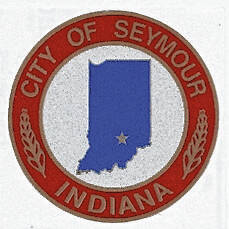
The city of Seymour recently amended an ordinance allowing businesses within industrial parks, with specific environmental certifications, to plant native grasses on their campus.
Mass pollination and increased wildlife encroachment were some concerns citizens raised with the council, but science shows those same concerns could have beneficial impact on the environment.
The debate around amending ordinance No. 18 Council Bill No. 39, which passed 5-2, started with attorney Jeff Lorenzo who brought forth a purchase agreement between Seymour Industrial Park Corp. and a company interested in developing a facility at the Eastside Industrial Park.
This potential food service industry has a projected investment of almost $84 million between this year and 2027 into Seymour. The company plans to start with 97 employees and work up to 120 by 2027 with an average starting wage of $27.50 an hour.
“This company is very serious about environmental stewardship,” Lorenzo said speaking on behalf of the company. “It wants to make certain that its environmental footprint in this community complies with the standards in which they have held themselves as a company interested in the environment.”
The ordinance addresses business entities participating in Leadership in Energy and Environmental Design, LEED, and/or the Sustainable Sites Initiative, SITE, programs and have received certifications to be permitted to utilize natural and native grasses on its real estate.
These environmental programs are rating systems that guide, evaluate and certifies a project’s sustainability in the planning, design, construction and management of landscapes and other outdoor spaces. The certification process often involves multiple steps and thousands of dollars.
The interested development site is approximately 70 acres and roughly 40 acres would be company buildings, Lorenzo said. Currently, the name of the company is being withheld because of a non-disclosure agreement.
A similar project was completed by a company in Boise, Idaho, called HP Inc. with the Sustainable Site Initiative. Their campus spans roughly 200 acres and was built in the early 1970s, where the prior land was farmland and, today, HP Inc. still farms 36 acres on site for local livestock feed.
Prior to their redevelopment, the company’s campus featured predominantly Kentucky Blue Grass turf, which required excessive amounts of water. After becoming certified with the SITE program they found ways to conserve water, reduce emissions from landscape maintenance equipment, increase soil health and biodiversity on their campus by installing a native grass seed and perennial mix.
Donna Stanley, a park ranger at Muscatatuck National Wildlife Refuge east of Seymour, said native prairie grasses are more common in central and northern Indiana, but there are a few isolated spots of prairie grasses here in Jackson County.
Stanley said some of these native grasses include prairie dropseed and sideoats grama which can grow two to three-feet tall, switch grass which can grow five to six-feet tall, Indiana grass which can grow up to five-feet and big and little bluestem which can grow between two to eight-feet tall to name a few.
According to the Indiana Native Plant Society Website, not only do native grasses increase biodiversity, but require significantly less water to maintain health and vitality among other benefits.
Stanley said she hopes the company will plant native flowers along with the grasses to benefit pollination.
“Our insects are declining,” she said. “We all need to be helping out insects, butterflies and bees because our food supply depends on them.”
A concern regarding if the native grass would spread to nearby neighborhoods and increased wildlife encroachment was raised during the meeting.
Councilman Clint Blish said working in agriculture everyday he is constantly fighting new weeds that he has never seen before.
“I guess that would be my concern of what kind of native grass it is and if it could turn into something we have never seen before,” he said.
Stanley said native grasses can provide nesting spots for rabbits and grassland birds, but believes deer wouldn’t be an issue as they prefer shorter grasses. She added generally native grasses do not spread.
“Generally this would be a good thing,” she said. “If I was living next to an industry that wanted to plant native grass I wouldn’t be opposed to it at all.”
Stanley said planting native plants can be wonderful not only for the environment, but the ecosystem. With biodiversity on the decline, ecosystems become destabilized.
“Our bird populations are in peril because of the decline in native insects, which is because of the pesticides and habitat loss,” she said.
Insects pollinate 90% of all flowering plants, and are the primary means by which energy is transferred from plants to most other animals in food webs, according to Indiana Native Plant Society’s website.
Meanwhile, North America is suffering severe losses in its bird population, with an estimated net loss of 2.9 billion breeding adults since 1970, according to a 2019 study by Kenneth Rosenberg and other scientists published in the Science Journal by American Association for the Advancement of Science.
“If people can plant native plants anywhere that is a good thing,” she said. “It’s good conservation practice and a win-win situation.”
Information on Indiana-native plants and attracting pollinators may be found at indiananativeplants.org.
Speakers are scheduled to discuss the importance of native plants at the visitor center at the wildlife refuge at 12895 E. U.S. 50, Seymour, from 10 a.m. to 2 p.m. July 6.
